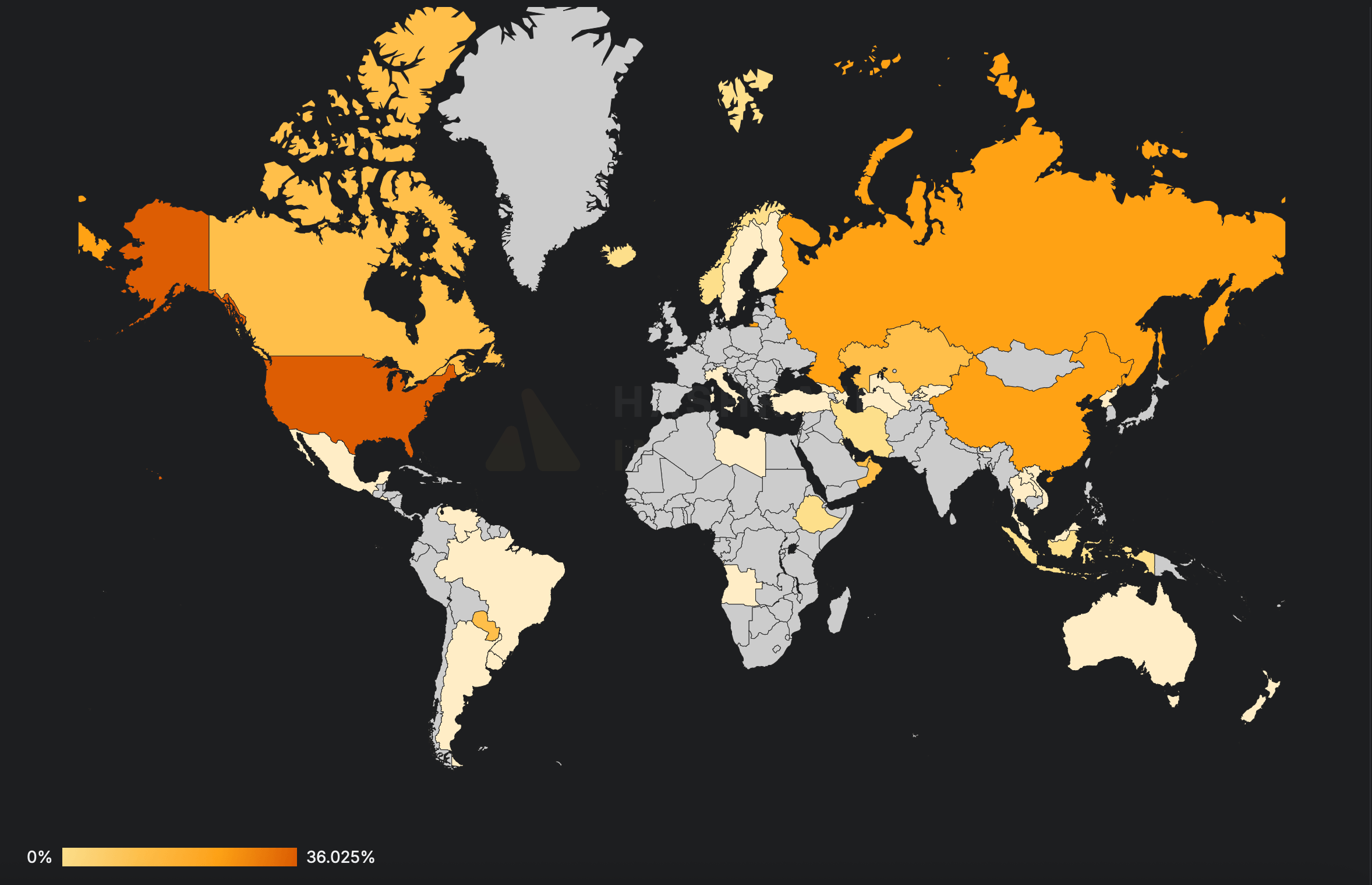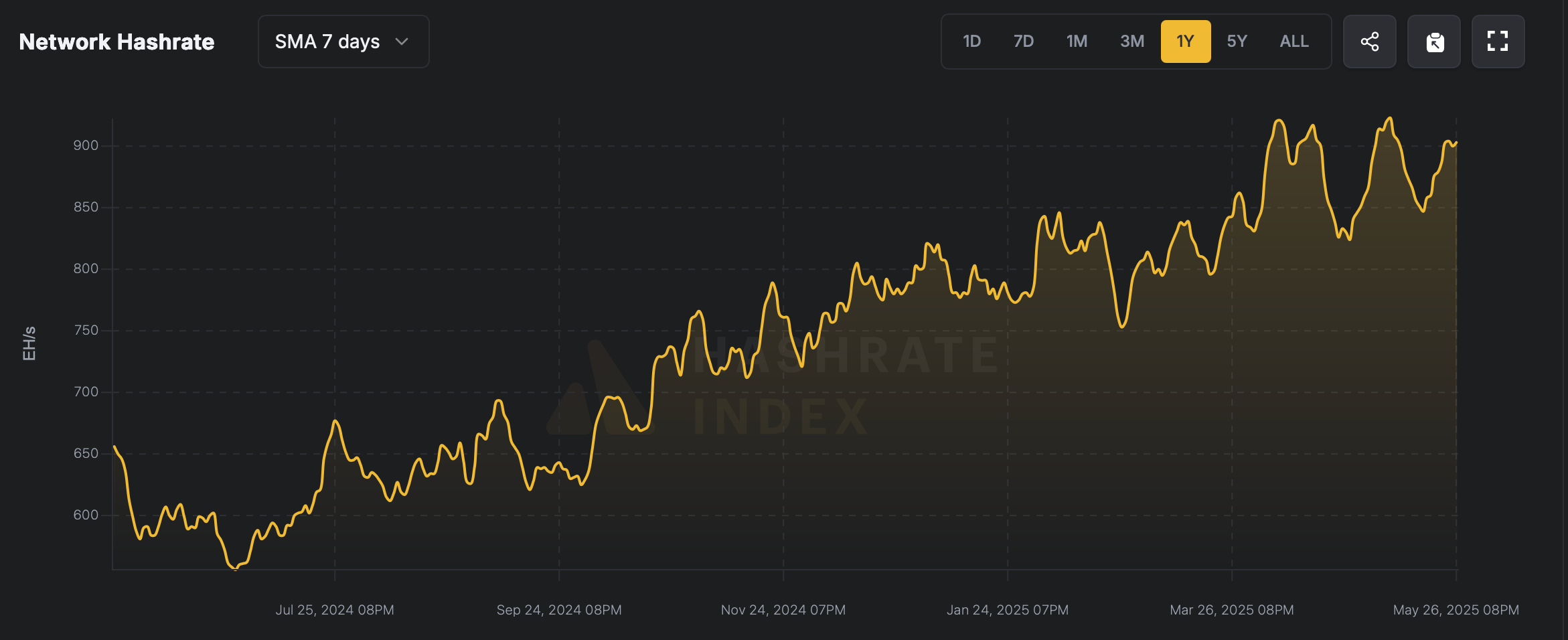Hot Zones of Computing Power: North America, Eurasia, and Latin America Lead the Bitcoin Computing Power Race

At the time of writing, the Bitcoin network hashrate exceeds 900 exahashes per second (EH/s). According to the latest data provided by hashrateindex.com, the United States ranks first with a share of 36.025% of the total global hashrate.
Global Hashrate Battle: US Leads, Russia Strengthens, China Holds Ground
The US is currently the most influential region in mining, as shown in the Q2 2025 heat map published by hashrateindex.com. This website provides a Bitcoin mining heat map that shows the global distribution of hashrate concentration using clear color gradients that reflect the relative mining activity in different countries.
The United States stands out in the deepest orange, indicating that it controls the largest share of global Bitcoin mining, at over 36% on the scale provided. In second place are countries like Russia, Canada, and China, all of which are represented by bright orange shades. Russia is actively developing its capabilities and controls 15.652% of global Bitcoin computing power. China has 13.727%, and Canada has about 2.919%, according to the Bitcoin mining heat map.
 Bitcoin mining heat map from Hashrateindex.com for Q2 2025.
Bitcoin mining heat map from Hashrateindex.com for Q2 2025.
The U.S. lead is due to a combination of factors, including abundant energy resources in states like Texas, favorable regulatory environments in some regions, and robust infrastructure to host large mining farms. Russia’s mining prowess is largely due to its vast, remote territories with access to inexpensive hydro and gas power.
 Total network hashrate as a 7-day simple moving average (SMA) over 1 year.
Total network hashrate as a 7-day simple moving average (SMA) over 1 year.
Canada also benefits from hydroelectric power, particularly in the provinces of Quebec and British Columbia, while China, despite tightening regulations in recent years, continues to maintain a significant presence, likely through hidden or small-scale operations in areas such as Sichuan or Xinjiang, where cheap hydroelectric power is available during the rainy season.
Other countries with active mining activity include Kazakhstan (2.484%), Paraguay (3.602%), the UAE (3.727%), Oman (3.106%), and Iran (1.242%), which are shaded in lighter orange and yellow. Kazakhstan, in particular, previously experienced a surge in mining activity following China’s ban, using its excess coal resources before facing its own regulations. Iran has also periodically mined Bitcoin, reportedly as a means to circumvent sanctions by offering subsidized electricity to legalized operations.
Paraguay stands out in South America, attracting attention due to its abundant and cheap hydropower from the Itaipu Dam. In contrast, large swaths of Africa, the Middle East, and parts of Southeast Asia are shown in gray, indicating either little mining activity or no data. These regions often face infrastructure issues, high energy costs, or political instability, which hinder the development of the mining sector.
The Bitcoin mining heat map from hashrateindex.com confirms a clear geographical bias towards North America, Eurasia, and parts of Latin America in the global distribution of Bitcoin hashrate.
Source: cryptonews.net



